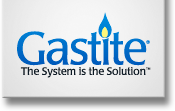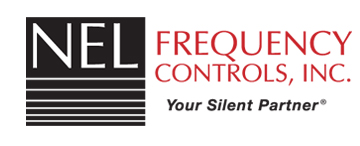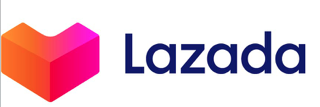Carboxymethylcellulose Market Status and Trend Analysis 2017-2026
- Report Code : 99S2204933
- Published On: Dec, 2020
- Category : Chemicals & Materials
- Pages : 137
-
Further key aspects of the report indicate that:
Chapter 1: Research Scope: Product Definition, Type, End-Use & Methodology
Chapter 2: Global Industry
Chapter 3: Market Dynamics
Chapter 4: Global Market Segmentation by region, type and End-Use
Chapter 5: North America Market Segmentation by region, type and End-Use
Chapter 6: Europe Market Segmentation by region, type and End-Use
Chapter 7: Asia-Pacific Market Segmentation by region, type and End-Use
Chapter 8: South America Market Segmentation by region, type and End-Use
Chapter 9: Middle East and Africa Market Segmentation by region, type and End-Use.
Chapter 10: Market Competition by Companies
Chapter 11: Market forecast and environment forecast.
Chapter 12: Industry .
The global Carboxymethylcellulose market has the potential to grow with xx million USD with growing CAGR in the forecast period from 2021f to 2026f.
Based on the type of product, the global Carboxymethylcellulose market segmented into
Purity (99.5 %+)
Purity (90%-99.5%)
Purity (50%-90%)
Based on the end-use, the global Carboxymethylcellulose market classified into
Oil & Gas Industry
Food Industry
Paper Industry
Textile Industry
Detergent Industry
Cosmetics Industry
Others
Based on geography, the global Carboxymethylcellulose market segmented into
North America [U.S., Canada, Mexico]
Europe [Germany, UK, France, Italy, Rest of Europe]
Asia-Pacific [China, India, Japan, South Korea, Southeast Asia, Australia, Rest of Asia Pacific]
South America [Brazil, Argentina, Rest of Latin America]
Middle East & Africa [GCC, North Africa, South Africa, Rest of Middle East and Africa]
And the major players included in the report are
Dow Chemical
CP Kelco
Ashland
Akzo Nobel
Daicel
Ugur Seluloz Kimya AS
DKS
Quimica Amtex
Nippon Paper Industries
Lamberti
Lihong
Wealthy
ShenGuang
Yingte
Lude Chemical
Anqiu Eagle Cellulose
Xuzhou Liyuan
Fushixin
Maoyuan
Ac selsan
-
With tables and figures helping analyze worldwide Carboxymethylcellulose market, this research provides key statistics on the state of the industry and is a valuable source of guidance and direction for companies and individuals interested in the market.
1 RESEARCH SCOPE1.1 Research Product Definition
1.2 Research Segmentation
1.2.1 Product Type
1.2.2 Main product Type of Major Players1.3 Demand Overview
1.4 Research Methodology
2 GLOBAL CARBOXYMETHYLCELLULOSE INDUSTRY2.1 Summary about Carboxymethylcellulose Industry
2.2 Carboxymethylcellulose Market Trends
2.2.1 Carboxymethylcellulose Production & Consumption Trends
2.2.2 Carboxymethylcellulose Demand Structure Trends2.3 Carboxymethylcellulose Cost & Price
3 MARKET DYNAMICS3.1 Manufacturing & Purchasing Behavior in 2020
3.2 Market Development under the Impact of COVID-19
3.2.1 Drivers
3.2.2 Restraints
3.2.3 Opportunity
3.2.4 Risk
4 GLOBAL MARKET SEGMENTATION4.1 Region Segmentation (2017 to 2021f)
4.1.1 North America (U.S., Canada and Mexico)
4.1.2 Europe (Germany, UK, France, Italy, Rest of Europe)
4.1.3 Asia-Pacific (China, India, Japan, South Korea, Southeast Asia, Australia, Rest of Asia Pacific)
4.1.4 South America (Brazil,, Argentina, Rest of Latin America)
4.1.5 Middle East and Africa (GCC, North Africa, South Africa, Rest of Middle East and Africa)4.2 Product Type Segmentation (2017 to 2021f)
4.2.1 Purity (99.5 %+)
4.2.2 Purity (90%-99.5%)
4.2.3 Purity (50%-90%)4.3 Consumption Segmentation (2017 to 2021f)
4.3.1 Oil & Gas Industry
4.3.2 Food Industry
4.3.3 Paper Industry
4.3.4 Textile Industry
4.3.5 Detergent Industry
4.3.6 Cosmetics Industry
4.3.7 Others
5 NORTH AMERICA MARKET SEGMENT5.1 Region Segmentation (2017 to 2021f)
5.1.1 U.S.
5.1.2 Canada
5.1.3 Mexico5.2 Product Type Segmentation (2017 to 2021f)
5.2.1 Purity (99.5 %+)
5.2.2 Purity (90%-99.5%)
5.2.3 Purity (50%-90%)5.3 Consumption Segmentation (2017 to 2021f)
5.3.1 Oil & Gas Industry
5.3.2 Food Industry
5.3.3 Paper Industry
5.3.4 Textile Industry
5.3.5 Detergent Industry
5.3.6 Cosmetics Industry
5.3.7 Others5.4 Impact of COVID-19 in North America
6 EUROPE MARKET SEGMENTATION6.1 Region Segmentation (2017 to 2021f)
6.1.1 Germany
6.1.2 UK
6.1.3 France
6.1.4 Italy
6.1.5 Rest of Europe6.2 Product Type Segmentation (2017 to 2021f)
6.2.1 Purity (99.5 %+)
6.2.2 Purity (90%-99.5%)
6.2.3 Purity (50%-90%)6.3 Consumption Segmentation (2017 to 2021f)
6.3.1 Oil & Gas Industry
6.3.2 Food Industry
6.3.3 Paper Industry
6.3.4 Textile Industry
6.3.5 Detergent Industry
6.3.6 Cosmetics Industry
6.3.7 Others6.4 Impact of COVID-19 in Europe
7 ASIA-PACIFIC MARKET SEGMENTATION7.1 Region Segmentation (2017 to 2021f)
7.1.1 China
7.1.2 India
7.1.3 Japan
7.1.4 South Korea
7.1.5 Southeast Asia
7.1.6 Australia
7.1.7 Rest of Asia Pacific7.2 Product Type Segmentation (2017 to 2021f)
7.2.1 Purity (99.5 %+)
7.2.2 Purity (90%-99.5%)
7.2.3 Purity (50%-90%)7.3 Consumption Segmentation (2017 to 2021f)
7.3.1 Oil & Gas Industry
7.3.2 Food Industry
7.3.3 Paper Industry
7.3.4 Textile Industry
7.3.5 Detergent Industry
7.3.6 Cosmetics Industry
7.3.7 Others7.4 Impact of COVID-19 in Europe
8 SOUTH AMERICA MARKET SEGMENTATION8.1 Region Segmentation (2017 to 2021f)
8.1.1 Brazil
8.1.2 Argentina
8.1.3 Rest of Latin America8.2 Product Type Segmentation (2017 to 2021f)
8.2.1 Purity (99.5 %+)
8.2.2 Purity (90%-99.5%)
8.2.3 Purity (50%-90%)8.3 Consumption Segmentation (2017 to 2021f)
8.3.1 Oil & Gas Industry
8.3.2 Food Industry
8.3.3 Paper Industry
8.3.4 Textile Industry
8.3.5 Detergent Industry
8.3.6 Cosmetics Industry
8.3.7 Others8.4 Impact of COVID-19 in Europe
9 MIDDLE EAST AND AFRICA MARKET SEGMENTATION9.1 Region Segmentation (2017 to 2021f)
9.1.1 GCC
9.1.2 North Africa
9.1.3 South Africa
9.1.4 Rest of Middle East and Africa9.2 Product Type Segmentation (2017 to 2021f)
9.2.1 Purity (99.5 %+)
9.2.2 Purity (90%-99.5%)
9.2.3 Purity (50%-90%)9.3 Consumption Segmentation (2017 to 2021f)
9.3.1 Oil & Gas Industry
9.3.2 Food Industry
9.3.3 Paper Industry
9.3.4 Textile Industry
9.3.5 Detergent Industry
9.3.6 Cosmetics Industry
9.3.7 Others9.4 Impact of COVID-19 in Europe
10 COMPETITION OF MAJOR PLAYERS10.1 Brief Introduction of Major Players
10.1.1 Dow Chemical
10.1.2 CP Kelco
10.1.3 Ashland
10.1.4 Akzo Nobel
10.1.5 Daicel
10.1.6 Ugur Seluloz Kimya AS
10.1.7 DKS
10.1.8 Quimica Amtex
10.1.9 Nippon Paper Industries
10.1.10 Lamberti
10.1.11 Lihong
10.1.12 Wealthy
10.1.13 ShenGuang
10.1.14 Yingte
10.1.15 Lude Chemical
10.1.16 Anqiu Eagle Cellulose
10.1.17 Xuzhou Liyuan
10.1.18 Fushixin
10.1.19 Maoyuan
10.1.20 Ac selsan10.2 Carboxymethylcellulose Sales Date of Major Players (2017-2020e)
10.2.1 Dow Chemical
10.2.2 CP Kelco
10.2.3 Ashland
10.2.4 Akzo Nobel
10.2.5 Daicel
10.2.6 Ugur Seluloz Kimya AS
10.2.7 DKS
10.2.8 Quimica Amtex
10.2.9 Nippon Paper Industries
10.2.10 Lamberti
10.2.11 Lihong
10.2.12 Wealthy
10.2.13 ShenGuang
10.2.14 Yingte
10.2.15 Lude Chemical
10.2.16 Anqiu Eagle Cellulose
10.2.17 Xuzhou Liyuan
10.2.18 Fushixin
10.2.19 Maoyuan
10.2.20 Ac selsan10.3 Market Distribution of Major Players
10.4 Global Competition Segmentation
11 MARKET FORECAST11.1 Forecast by Region
11.2 Forecast by Demand
11.3 Environment Forecast
11.3.1 Impact of COVID-19
11.3.2 Geopolitics Overview
11.3.3 Economic Overview of Major Countries
12 REPORT SUMMARY STATEMENT
-
The Carboxymethylcellulose Market has been segregated into various crucial divisions including applications, types, and regions. Each market segment is intensively studied in the report contemplating its market acceptance, worthiness, demand, and growth prospects. The segmentation analysis will help the client to customize their marketing approach to have a better command of each segment and to identify the most prospective customer base.
Report Objectives / Segmentation Covered :
By Companies / players:
By Regions:
By Type:
By Application:
Frequently asked questions(FAQ's):
A large number of Global Carboxymethylcellulose players are focusing on individualized and innovative technologies that will provide the necessary impetus for profit and growth in the coming years.
The Carboxymethylcellulose Market is expected to reach a reasonable valuation by 2030; now the market is expected to shift its focus from growth to value.
As the shift to value addition continues, companies in the Carboxymethylcellulose Market face the dual challenge of improving interoperability to optimize performance and experience.
The Carboxymethylcellulose study focuses on shifting market dynamics, geopolitical and regulatory regulations, and key players' strategies to carefully analyze demand at risk across multiple industry categories.















